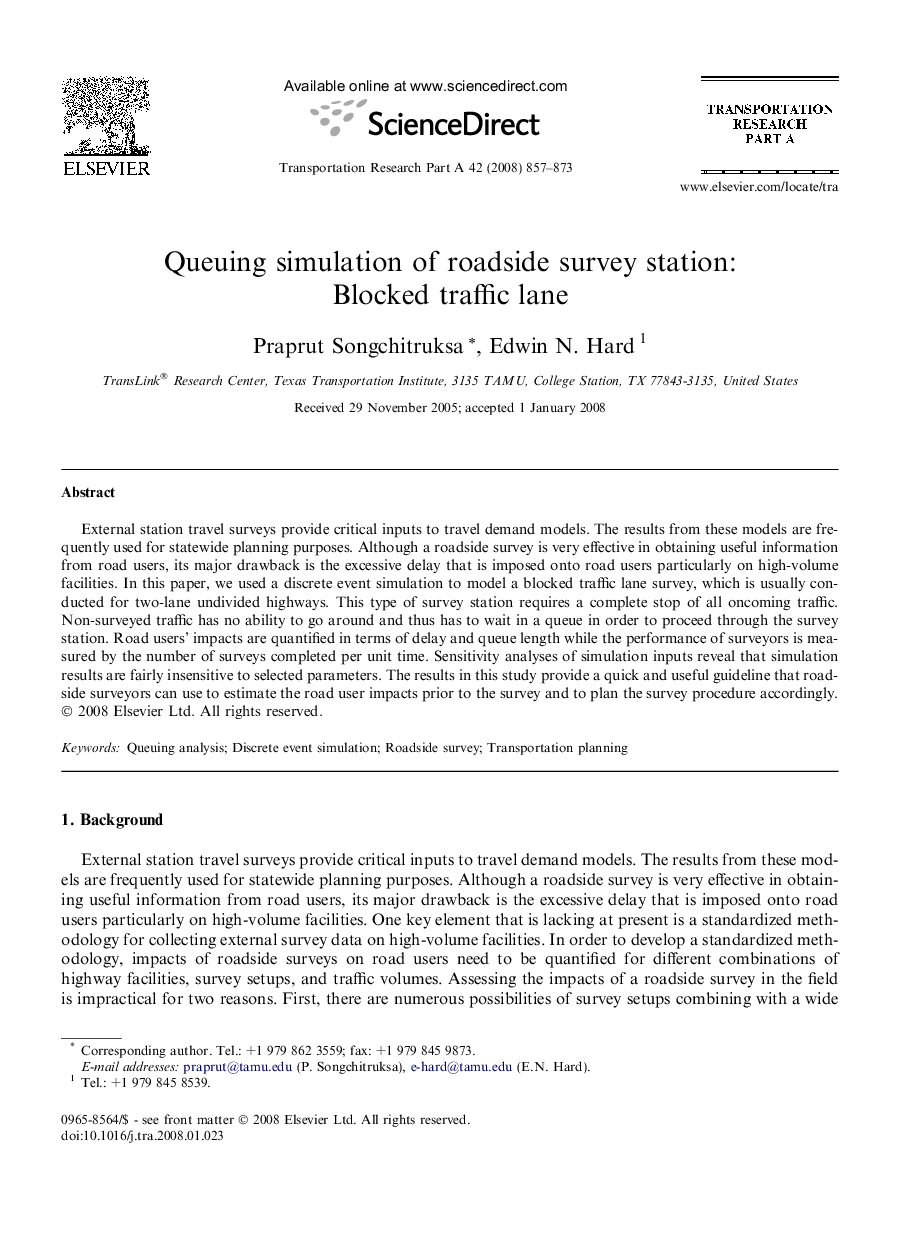| Article ID | Journal | Published Year | Pages | File Type |
|---|---|---|---|---|
| 311390 | Transportation Research Part A: Policy and Practice | 2008 | 17 Pages |
External station travel surveys provide critical inputs to travel demand models. The results from these models are frequently used for statewide planning purposes. Although a roadside survey is very effective in obtaining useful information from road users, its major drawback is the excessive delay that is imposed onto road users particularly on high-volume facilities. In this paper, we used a discrete event simulation to model a blocked traffic lane survey, which is usually conducted for two-lane undivided highways. This type of survey station requires a complete stop of all oncoming traffic. Non-surveyed traffic has no ability to go around and thus has to wait in a queue in order to proceed through the survey station. Road users’ impacts are quantified in terms of delay and queue length while the performance of surveyors is measured by the number of surveys completed per unit time. Sensitivity analyses of simulation inputs reveal that simulation results are fairly insensitive to selected parameters. The results in this study provide a quick and useful guideline that roadside surveyors can use to estimate the road user impacts prior to the survey and to plan the survey procedure accordingly.
